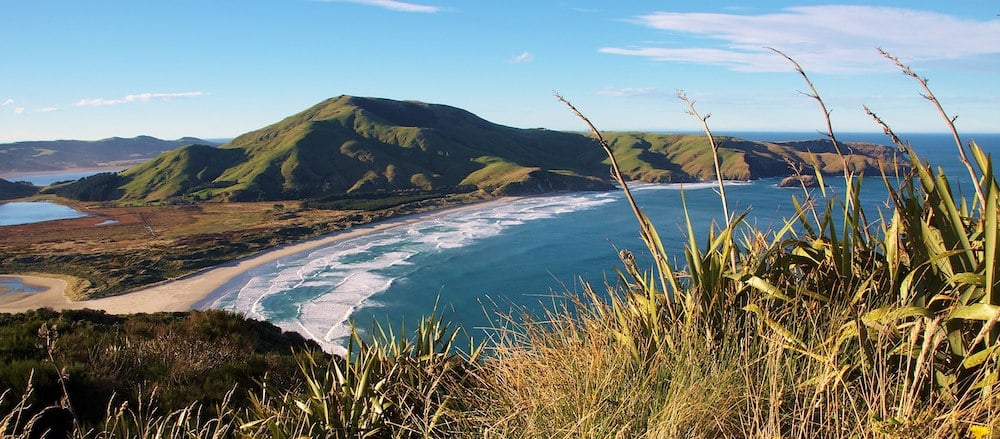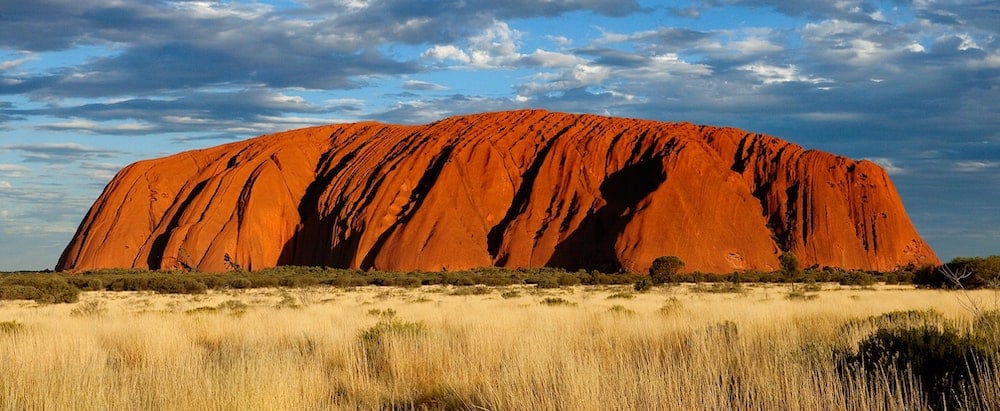Oceania

Oceania by its broadest definition is a geographical region comprising Australasia, Melanesia, Micronesia, and Polynesia. Spanning the Eastern and Western Hemispheres, at the centre of the water hemisphere, Oceania is estimated to have a land area of about 9,000,000 square kilometres (3,500,000 square miles) and a population of over 46 million. When compared to the other continents, Oceania is the smallest in land area and the second-least populated after Antarctica. The largest and most populous country in Oceania is Australia, and the largest city is Sydney. Puncak Jaya in Highland Papua, Indonesia, is the highest peak in Oceania at 4,884m (16,024 ft). The geographical area is larger, however, than the geopolitical, continent of Oceania or Australasia as it is sometimes called. Places like Hawaii (part of the USA) is politically part of North America and Indonesia is part of Asia. The United Nations (UN) uses its own geopolitical definition of Oceania, which utilises four of the five sub-regions from the 19th century; Australasia, Melanesia, Micronesia, and Polynesia. This definition consists of discrete political entities, and so excludes the Bonin Islands, Hawaii, Clipperton Island and the Juan Fernández Islands, along with Easter Island, which was annexed by Chile. Fatbirder pages reflect this narrower geopolitical ‘continent’, which can be divided into the following regions.
Micronesia, which lies north of the equator and west of the International Date Line, includes the Mariana Islands in the northwest, the Caroline Islands in the centre, the Marshall Islands to the west and the islands of Kiribati in the southeast.
Melanesia, to the southwest, includes New Guinea, the world’s second largest island after Greenland and by far the largest of the Pacific islands. The other main Melanesian groups from north to south are the Bismarck Archipelago, the Solomon Islands, the Santa Cruz Islands, Vanuatu, Fiji and New Caledonia.

Allans Beach, NZ ©Tomas Sobek, CC BY 2.0 via Wikimedia Commons
Polynesia, stretching from Hawaii in the north to New Zealand in the south, also encompasses Tuvalu, Tokelau, Samoa, Tonga, and the Kermadec Islands to the west, the Cook Islands, Society Islands and Austral Islands in the centre, and the Marquesas Islands, the Tuamotus, Mangareva Islands, and Easter Island to the east.
Australasia comprises Australia, New Zealand, and neighbouring islands in the Pacific Ocean. Along with India most of Australasia lies on the Indo-Australian Plate with the latter occupying the Southern area. It is flanked by the Indian Ocean to the west and the Southern Ocean to the south.
Oceanian islands are of four basic types: continental islands, high islands, coral reefs and uplifted coral platforms. High islands are of volcanic origin, and many contain active volcanoes. Among these are the Solomon Islands. Oceania is one of eight terrestrial biogeographic realms, which constitute the major ecological regions of the planet. Related to these concepts are Near Oceania, that part of western Island Melanesia which has been inhabited for tens of millennia, and Remote Oceania which is more recently settled. Although the majority of the Oceanian islands lie in the South Pacific, a few of them are not restricted to the Pacific Ocean – Kangaroo Island and Ashmore and Cartier Islands, for instance, are situated in the Southern Ocean and Indian Ocean, respectively, and Tasmania’s west coast faces the Southern Ocean. The coral reefs of the South Pacific are low-lying structures that have built up on basaltic lava flows under the ocean’s surface. One of the most dramatic is the Great Barrier Reef off northeastern Australia with chains of reef patches. A second island type formed of coral is the uplifted coral platform, which is usually slightly larger than the low coral islands. Examples include Banaba (formerly Ocean Island) and Makatea in the Tuamotu group of French Polynesia.
Oceania has a diverse mix of economies from the highly developed and globally competitive financial markets of Australia, French Polynesia, Hawaii, New Caledonia, and New Zealand, which rank high in quality of life and Human Development Index, to the much less developed economies of Kiribati, Papua New Guinea, Tuvalu, Vanuatu, and Western New Guinea, while also including medium-sized economies of Pacific islands such as Fiji, Palau, and Tonga.
Birding Oceania
Oceania covers a vast area of the Pacific Ocean including Polynesia, Micronesia, Australia, New Zealand and can almost be characterised by the birdlife and other wildlife found only there. Relative isolation in many places led to endemism. New Zealand is a prime example. Birds developed uniquely there with the nearest land a thousand miles away. Until historical times there were no mammals (with the possible exception of bats) and so few predators. Flight was lost by many species and others fly poorly as they did not need to escape predators. Giantism abounded with as many as fourteen species of Moa, anyone of which would have dwarfed Ostriches. The worlds largest eagle was there only predator until humans arrive about a thousand years ago.

Uluru ©Ek2030372672, CC BY-SA 4.0 via Wikimedia Commons
Australia split from the super content of Gondwanaland before any other and so its early egg-laying mammals and marsupials were never superseded or out-competed until humans arrived (perhaps 30,000 years ago). For visiting birders what strikes one most forcibly is that half the bird families are completely unfamiliar… let alone the many species.
Other parts of Oceania are similar but usually on a smaller scale. Birdlife is wonderful in its diversity with many families endemic to Australia or its immediate environs. Non-Australian birders are only just beginning to realise that some of the very best birding sites in the world not to say some of the most beautiful and interesting birds can be found there. New Zealand is sadly a tale of loss of many of the endemics although some remain, much of the avifauna was introduced from elsewhere. New Guinea is exceptionally difficult in terrain which has enable many of its species to survive including its virtually unique Birds of Paradise.
While the larger islands and landmasses have high numbers of species, smaller islands tend to have very few land birds. However, Oceania is the realm of seabirds in exceptional variety.

-
Number of bird species: c. 2,000
This represents approximately 20% of the world total.
-
A Directory of Wetlands in Oceania
By D Scott | Wetlands International Indonesia Office | 1993 | Paperback | 444 pages, Figs | ISBN: 9780950573120 Buy this book from NHBS.com -
Where to Watch Birds in Australasia & Oceania
| By Nigel Wheatley | Christopher Helm | 1998 | Hardback | 448 pages, 50 line illustrations, 100+ maps | Out of Print | ISBN: 9780713645439 Buy this book from NHBS.com
-
BirdLife Australia Raptor Group
WebpagePromoting the study, conservation and management of Australian diurnal and nocturnal birds of prey -
Oceanic Society
WebsiteThe Oceanic Society has an integrated approach to marine life preservation, combining several initiatives to achieve a single goal -
Pacific Birds
WebsiteWe value environmental sustainability and are inspired by the beauty and diversity of migratory birds across the globe. -
Pacific Islands Conservation Initiative
WebsiteOur mission is to develop a society that works in the tropical pacific to preserve species, habitats and communities through the provision of sound science, establishment of programmes and advocating for legislative protection. -
Pacific Seabird Group
WebsiteThe Pacific Seabird Group (PSG) is a society of professional seabird researchers and managers dedicated to the study and conservation of seabirds and their environment. -
Southern Oceans Seabird Study Association
WebsiteSOSSA is a wildlife conservation and research organisation. Its members are dedicated amateurs and professionals who share a common interest and concern for the marine environment and the wildlife of the Southern Oceans. SOSSA organises regular pelagic trips from Wollongong, NSW and Southport, QLD so both members and visitors can view some of the spectacular marine life that occurs off Australia's coast
-
Birding Ecotours
Destinations
-
2016 [07 July] - David Hoddinott & Rich Lindie - Southwest Pacific Islands
ReportThe birds, of course, were as spectacular as always, and our exploits secured us great sightings of no less than 79 of the region's endemics, including such megas as Kagu, Horned Parakeet, Golden Fruit Dove, Cloven-feathered Dove, Crow Honeyeater, Vanuatu Kingfisher, Maroon Shining -
2016 [10 October] - Andrew Walker - Fiji, New Caledonia & Samoa
PDF ReportTrip highlights were numerous and included most endemics, Kagu, New Caledonian Crow, Crow Honeyeater, (Natewa) Silktail, Horned Parakeet, Masked Shining Parrot, Maroon Shining Parrot, Crimson Shining Parrot, Collared Lory, Azure-crested Flycatcher, Samoan Whistler, Mao, and Flat-billed Kingfisher, but the many interesting and beautiful pigeons and doves really stood out as being exceptional, with Cloven-feathered Dove, Goliath Imperial Pigeon, Barking Imperial Pigeon, Golden Fruit Dove, Orange Fruit Dove, Whistling Fruit Dove, Many-colored Fruit Dove, and Crimson-crowned Fruit Dove all seen well.


